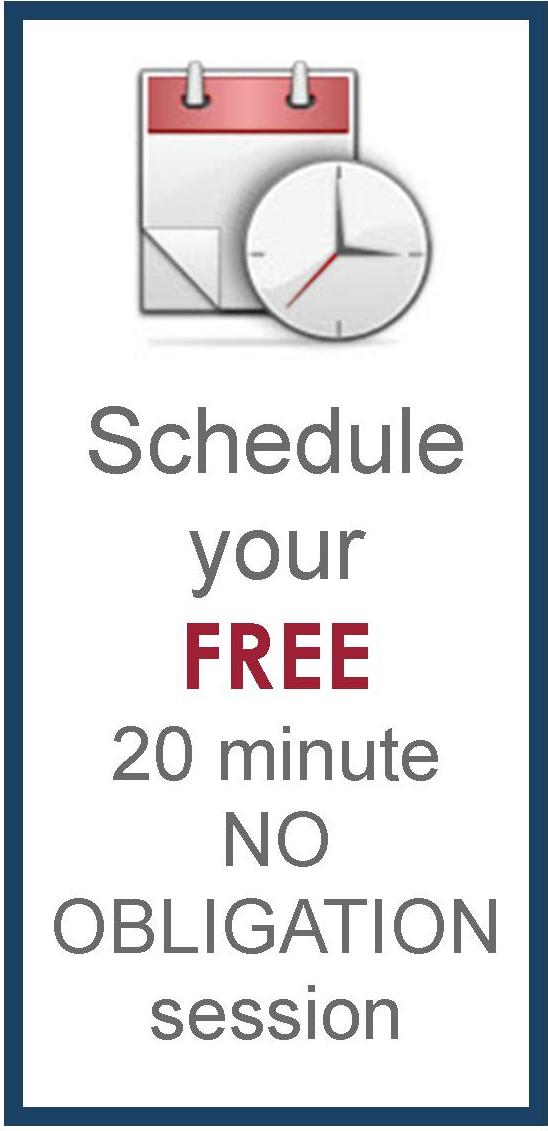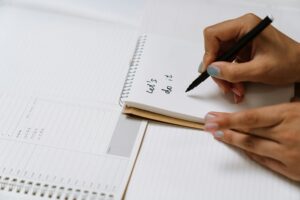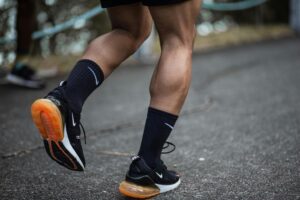Energy follows attention: Building confidence

Because one believes in oneself, one doesn’t try to convince others. ~ Lao Tzu, no exact dates, circa 1368-1644
Have you ever noticed when you decide to buy a new car, you suddenly see that make and model everywhere you turn? On the road, in parking lots, internet ads, and streaming video? My yoga teacher has an expression for this I really like: “Energy follows attention.” She uses it to keep students focused on a point outside themselves to help stay balanced while doing poses like tree or egret that require standing with just one foot on the ground. Clearly, this is an expression that can be applied to the rest of life. I think it can easily be tied to creating confidence for yourself.
Imagining disaster
One of the things that most annoys me when I am practicing for a talk is imagining how awful everything is going to be: I am going to forget what I came to say; the audience is going to be bored and playing on their cellphones; I will mispronounce a word I know perfectly well; I will trip on my way to the podium and scatter all my notes…in short, it becomes an imagined disaster. I have to consciously pull myself back from the brink, and refocus on a positive outcome.
Imagining success
Sian Beilock’s books, Choke (2010) and How the body knows its mind (2015), have helped me in avoiding negative pathways with some simple actions. The first book is focused on ways to change your thinking for better outcomes, and the second book focuses on using your body to influence your mind. Beilock holds doctorates in both kinesiology and psychology and is now president of Barnard College. That’s a success story for sure.
Mental exercises
- One of my favorite exorcisms, er, exercises from the first book is that you should write down all the things that are worrying you about an upcoming event. Write for only 10-15 minutes, then stop. Just putting them down on paper can reduce your anxiety. Like sunshine acting as a disinfectant.
- Here’s my addition to this exercise: Remind yourself of all the other ways you have been successful in your life, and let yourself reexperience the positive emotions associated with your successes. It doesn’t hurt to actually write down the successes to balance out the worries, then glance over them when you need a confidence booster. Preparation and practice lead to success and build confidence, with one real achievement on top of another.
- Notice what is already working for you, from little to big things. In my case, the computer is cooperating with my writing, the telephone is allowing me to talk to clients, the microwave is reheating the coffee I let go cold, my husband is downstairs playing on his ham radio, my kids are somehow managing their own lives and not calling me in crisis, and I am healthy enough to worry about what I will eat, not whether I will eat. Kind of puts things in perspective, doesn’t it? Remembering all the parts of your life that are working can ease your mind and help instill confidence in the future.
- Make whatever is worrying you smaller by changing your point of view. This doesn’t mean you will eliminate fear. A little bit of fear is like stage fright: good in small doses, paralyzing in large ones. What about looking at this from the view of someone you know: Are you being far harder on yourself than anyone else would be? Imagine whatever is bothering you from the perspective of 20 years into the future. Does your current concern matter as much? Try widening your view by lifting your eyes to the sky and the wide horizon’s panorama. Does the wider view make the apprehension smaller? Shrinking your worry to a manageable size through perspective can simultaneously reduce anxiety and build confidence.
- Now unreel the movie of yourself in your mind’s eye. The unconscious mind thinks in pictures extraordinarily quickly. Take all those things you were imaging in a negative way and flip them over. See yourself calm, cool and collected walking up to the podium, looking out at an engaged audience, speaking easily and naturally with confidence. What clothing are you wearing? Make sure it feels good and looks professional, and will not distract you from what you want to say. If something goes wrong in real life, treat it as a learning experience. I once gave a talk wearing a long green silk scarf. It looked lovely in the mirror. Unfortunately, it would not stay in place as I moved around on stage, and I was constantly adjusting it, to the point of nearly forgetting what I had to say. To keep this incident from haunting me, I had to reframe it as a learning experience. Which it most certainly was: I don’t wear clothes requiring my attention when speaking now.
Physical embodiment
Let’s look at the physical side of this equation. Bielock’s approach uses “embodied cognition,” placing a person firmly in a physical environment feeding information from the outside world into the brain. It’s not a one-way street from the brain to the body. The body also informs the mind. What are you communicating back to your own brain with your body? Is the energy you are projecting positive? Or negative? It turns out that standing up straight helps breathing, improves circulation, lung capacity and digestion. It also projects a confident belief in yourself. Slouching reduces confidence.
You can test this for yourself at home: imagine reporting a news story as a person in authority on the subject, standing up straight, looking directly into the camera, projecting expertise. Now imagine yourself reporting the same story, slumped over, dejected, uncertain, and doubtful. You can literally feel the difference in your own body. Posture can influence both how you feel about yourself and how others feel about you. Or as Beilock would say, “what’s outside our head alters what’s inside.”
A few more examples: Walking while talking can help fire up your brain for greater creativity and clarity, one reason some people feel compelled to pace while discussing a problem, or using gestures can help stop you from going blank when speaking publicly. Better learning occurs in children where there is a physically active component, not just talking. Time spent walking in nature aids concentration and creative breakthroughs. Even looking out the window helps with this. All of these are examples of embodied cognition.
Remember the hatha yoga principle “where awareness goes, energy flows.” If you focus on the negative, that’s where you are taking both your body and your mind. Noticing, and then directing, where you put your attention can help create a more confident you.
Tags: confidence







Pingback: Is the Small Fish, Big Pond experience zapping your confidence? - Transitioning Your Life